
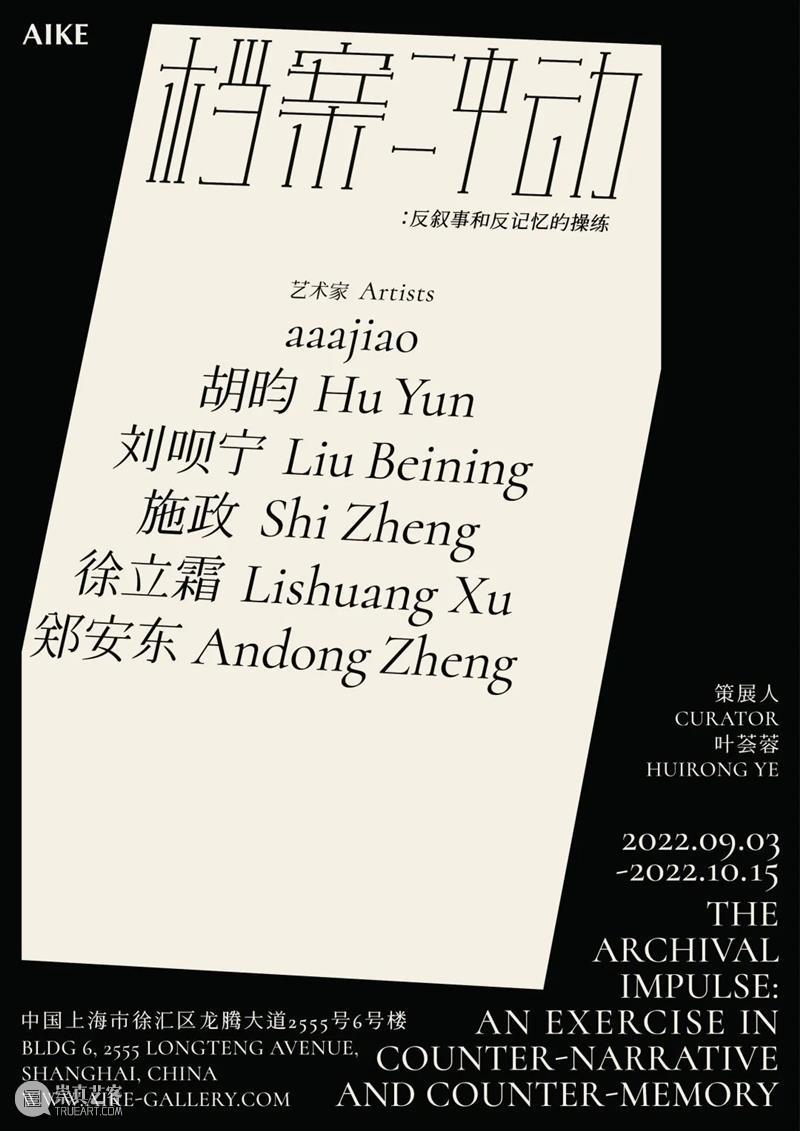
档案冲动:反叙事和反记忆的操练
The Archival Impulse:
An Exercise in Counter-Narrative and Counter-Memory
2022.09.03 - 10.15
艺术家 Artists
aaajiao,胡昀 (Hu Yun),刘呗宁 (Liu Beining),施政 (Shi Zheng),徐立霜 (Lishuang Xu),郑安东 (Andong Zheng)
策展人 Curator
叶荟蓉 (Huirong Ye)
开幕 Opening
2022.09.02 16:00 - 19:00
表演 Performance
徐立霜 (Lishuang Xu)
2022.09.02 18:00
AIKE,中国上海市徐汇区龙腾大道2555号6号楼
Bldg 6, 2555 Longteng Avenue, Xuhui District, Shanghai
*Scroll down for English
近旁的沙土中,有一张破碎的石脸
抿着嘴,蹙着眉,面孔依旧威严
想那雕刻者,必定深谙其人情感
那神态还留在石头上
——雪莱,《奥兹曼迪亚斯》(杨绛 译)
浪漫派臆测人类具备一种与生俱来的对无限的企图,以致永远无法对有限的事物感到满足。自收集和整理行为的源头起,这一企图便萦绕不绝,直至被委以建立历史与文化记忆的重任。德里达(Jacques Derrida)将档案视作一个无法实现的意识形态目标,即收集基础真理和知识以追求正义。当内在的渴望敦促我们去铭记和收集时,另一股驱力推动我们通过沉默和遗忘来毁坏和删除档案(记忆)。这一相互交织的、激烈的对立中,充斥着带有目的性的遗漏和增补。
被纳入系统得以留存和呈现的,我们称之为文化档案库。与之相对的,那些非常规的、未被赋予价值的、不成功的、乏味的、未经言说的东西,我们称之为世俗空间。格洛伊斯 (Boris Groys)指明了两者之间存在的某种有意识的策略,价值界限的转换使它们相互关联,各为补充。这的确是一场分秒必争的估价,由文化价值的裁决者和文化特权的使用者把持,无时无刻不在竞争着被保存、被收藏、被展示的资格。大到一场远征行动的宣传,小到一个快门——即一次对风景的攥取——档案的同步化和统一化就伴随着帝国殖民的扩张,意识形态的操纵,生产和分配方式的固化而得以实现了。
“档案冲动:反叙事和反记忆的操练”聚集了六位艺术家的近期实践,通过艺术干预,激活档案与身份、记忆和历史之间更为复杂的关联。此次展览既是将档案作为媒介和形式而展开的艺术实践的一次集中讨论,也意图为档案化(archivalization)背后游移的权力关系和文化价值提供新的阐释情境。以或大或小的方式,作品呈现出图标学、分类学、索引学、类型学或考古学的特质。它们或被挪用、提取、切割,或被陈列、叠加、编纂,将档案材料本身转译为一种审美原则,也将艺术模式转为历史化的构造:一方面,它指证了某些未被认定的劳动,另一方面,它也供述了迫于被忘却的记忆。
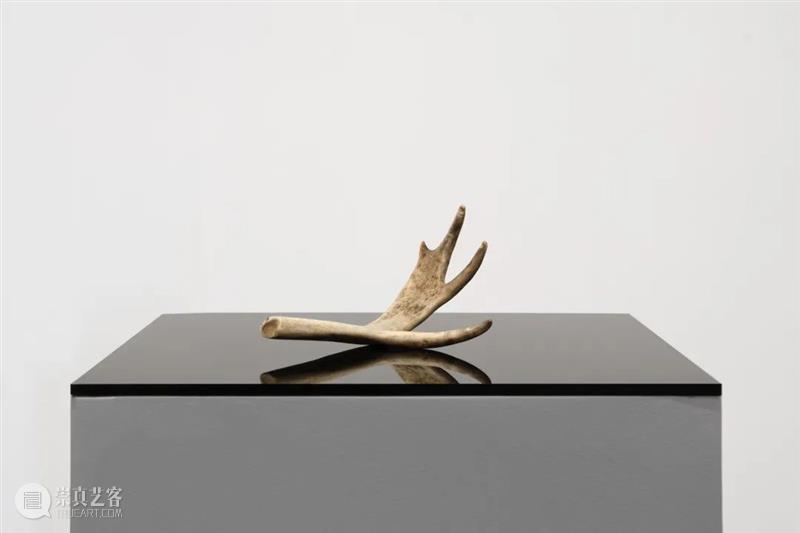
刘呗宁,《缝合,态势》,2022,骨,尺寸可变
Liu Beining, Stitching, Pointing, 2022, Bones, Dimensions variable
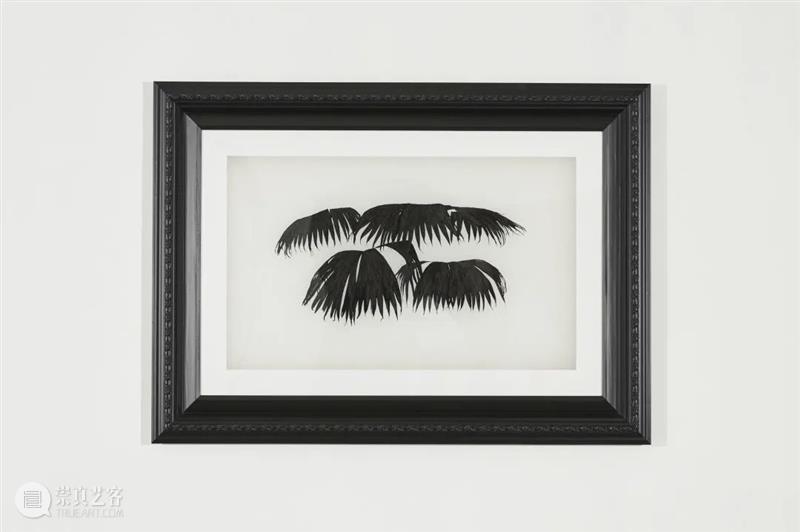
胡昀,《无题(棕榈 No. 6)》,2018,纸本铅笔,墨,110 × 150 × 6.5 cm
Hu Yun, Untitled (Palm No. 6), 2018, Pencil and ink on paper, 110 × 150 × 6.5 cm
《缝合、态势》包含一个鹿角和一个骨折过的剑齿虎的肋骨,刘呗宁的装置作品作为此次展览的引子,指涉的是档案作为记忆和创伤的延伸。胡昀的艺术实践通常根植于个体在历史长河中的自我定位,通过对历史史实和原始文献进行编纂和想象,介入到更为广大的殖民和跨文化语境之中。基于阿尔弗雷德·哈特(Alfred A. Hart)作为中央太平洋铁路官方摄影师期间拍摄的照片,郑安东探访了美国西部早期华人劳工留下的物理证据,在现场构建法证摄影的场景,以此对抗由历史照片建构的视角下叙事的局限性。徐立霜围绕艺术行业的非核心领域展开了当下的调研,通过“盒子”这一线索,将艺术创作和知识生产中我们视而不见的劳动串联在一起。
《雾晨》体现了由数字技术构成的新的传播系统中,档案是如何传输、保存和转化的。通过代码抓取和整理过去六年间《纽约时报》的首页后,施政训练神经网络对其进行“阅读”,无限生成接近现实却不可读的模糊图像。aaajiao的作品则展现了个体记忆、集体记忆和互联网记忆之间的困难关系。当我们的物理和虚拟身份都被挤压到无限狭小的当下,记述本身变得更任何时候更为重要。
档案所承载的隐喻和符号建构性地藏匿在它的背后,因此无法直接观照。为了进入这一幽暗不透明的深处,艺术家们试图在公共与私人、文献与评注、权力和从属关系之间找到切入点。许多尝试不完全都是顺滑的,而是拉扯的、身体力行的、甚至艰涩的,以此来回应展览试图抛出的问题——如何在宏大的话语里找到细若游丝的连结,在历史的先验中构建真实的不同位面,并站在规则的内部,使他者和域外显露出来。需要警惕的是,此次展览的作品也无法逃脱被甄选和揣测的命运,以由策展人认可的文化物的面貌临时性地聚集在一起。作为将它们串联在一起的线索,这些问题将于此地被短暂地讨论,激起一层微弱的涟漪后,消散于平静的水面。
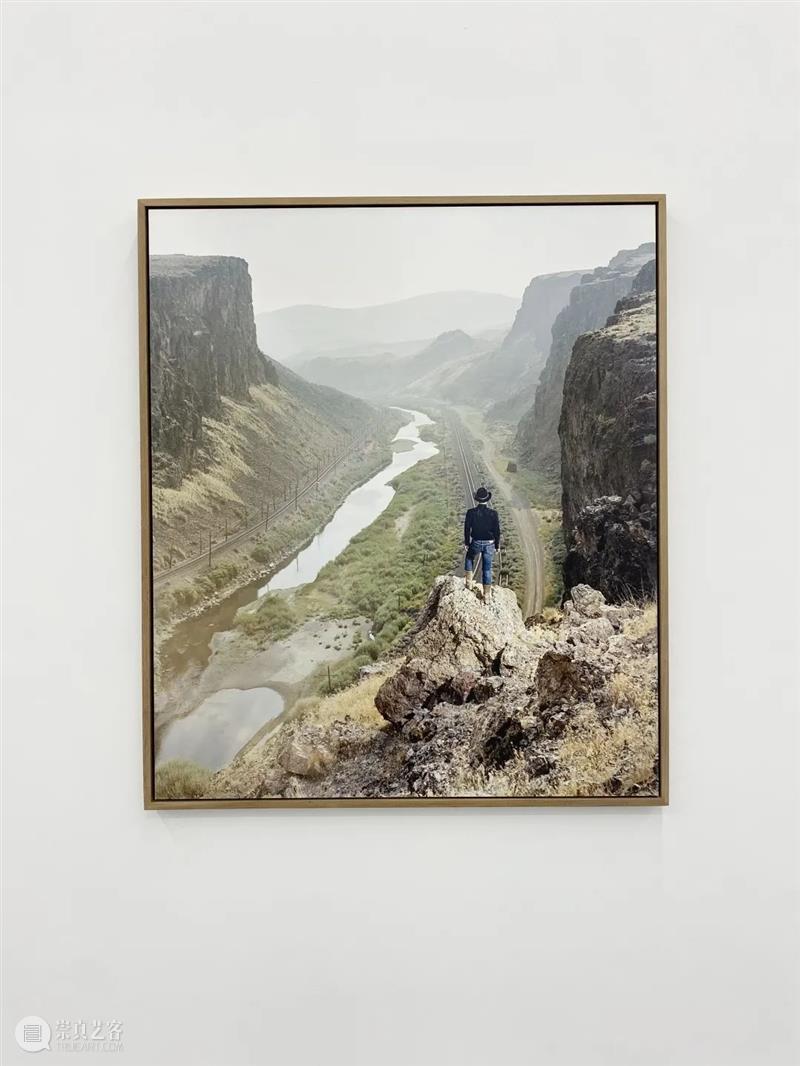
郑安东,《自拍像(一个中国牛仔)》,2018,彩色喷墨打印照片,124.5 × 106.7 cm
Andong Zheng, Self-Portrait (A Chinese Cowboy), 2018, Archival inkjet print, 124.5 × 106.7 cm
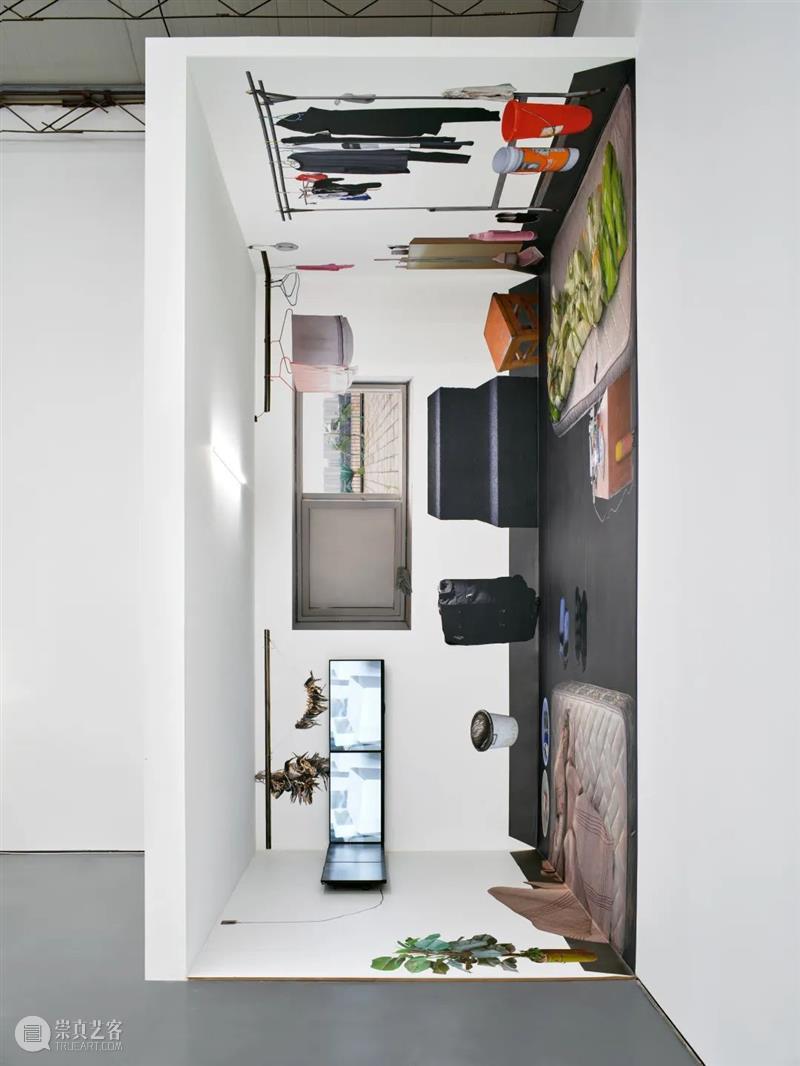
徐立霜,《夹层》,2022,墙贴打印,灯管,390 x 190 x 280 cm
Lishuang Xu, Sandwiching, 2022, Printed wall stickers, fluorescent lamp, 390 x 190 x 280 cm
…Near them on the sand,
Half sunk, a shattered visage lies, whose frown
And wrinkled lip and sneer of cold command
Tell that its sculptor well those passions read
—Percy Shelley, Ozymandias
The Romantics conjecture that human beings possess an innate desire for infinity and therefore can never be satisfied with the finite. This desire was the beginning of collecting and sorting. Eventually this act built the archive which housed historical and cultural memory. Jaques Derrida mentions the opposing human desire: the drive which pushes us to destroy and corrupt the archive through silence and forgetting. This violent clash is replete with purposeful and accidental omissions and additions.
Boris Groys defines the cultural archive as those that have been incorporated into the system to be preserved and presented. In contrast, the unconventional, the unvalued, the unsuccessful, the annoying, the unspoken, he calls the profane realm. Strategically shifting the contents of the two is an act of valuation, only able to be performed by those in power. These arbiters of cultural value and users of cultural privilege act through production of narratives and alteration of memories. The contents, then constantly compete to be shifted; for the right to be retained, collected, and displayed. Propaganda from an expedition, a creation of a list, a simple shutter pressing—a possession of the landscape—synchronize and unify the archive, which enables the expansion of imperial colonization, the manipulation of ideology, and the solidification of modes of production and distribution.
“The Archival Impulse: An Exercise in Counter-Narrative and Counter-Memory” brings together the recent practices of six artists to activate the more complex connections between archives and identity, memory and history through artistic interventions. The exhibition is not only a focused discussion of artistic practices that use the archive as a medium and form, but also provides new interpretative contexts for the shifting power relations and cultural values behind archivalization. The works take on iconographic, taxonomic, indexical, typological, or archaeological qualities. They are either appropriated, extracted, and collaged, or showcased, superimposed, and compiled; translating the archival material into aesthetic principles and artistic patterns into historicized construction. Some testify to certain unidentified labor. Some confess to memories that are forced into oblivion.
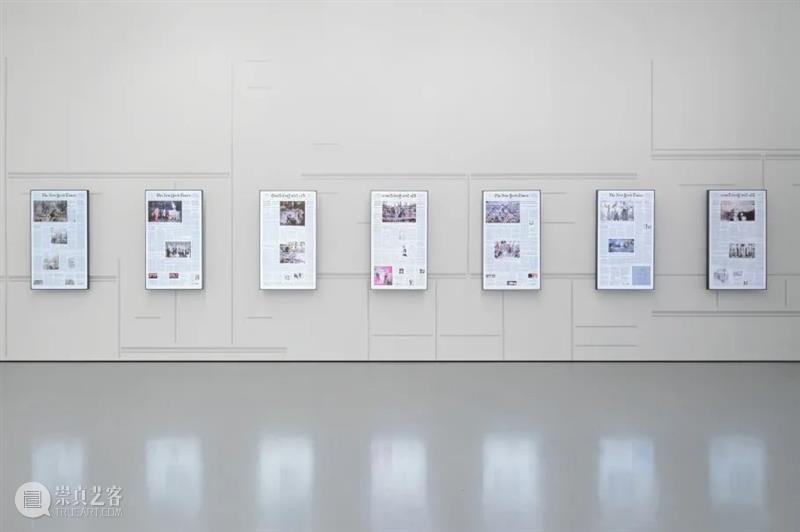
施政,《雾晨》,2019,视频装置,10’00”循环
Shi Zheng, Forsty Morning, 2019, Video installation, 10'00" loop
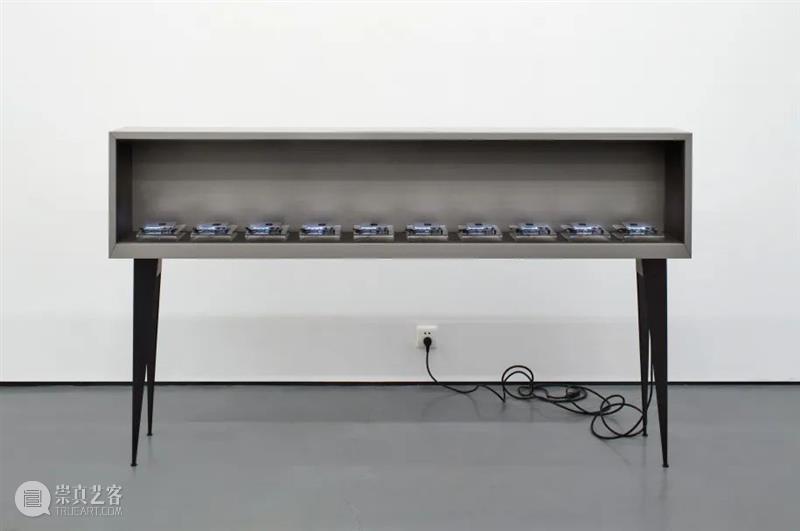
aaajiao, 《博物考古》,2010,亚克力,电子秤,金属结构,140 × 240 × 35 cm
aaajiao, Blog Archaeology, Metal structure, acrylic, electronic weigher, 140 × 240 × 35 cm
A deer antler and a fractured rib of a saber-toothed tiger—Liu Beining's installation, Stitching, Pointing, introduces the exhibition. The work refers to the archive as an extension of memory and trauma. Hu Yun's artistic practice is often rooted in the self-positioning of an individual in the course of history, intervening in the broader colonial and cross-cultural context through the codification and re-imagination of historical facts and primary documents. Based on photographs taken by Alfred A. Hart, the official photographer of the Central Pacific Railroad, Andong Zheng searches for relics left by migrant workers in the American West. He identifies, remakes and documents the forensic scenes to counter the limited constructed narratives in the photographic archives. Lishuang Xu focuses on the marginalized workers of the art industry by linking invisible labor within art creation and knowledge production through the thread of “boxes.”
Multi-channel video installation Frosty Morning exemplifies how archives are transmitted, preserved, and transformed in new digital communication systems. After compiling every front page of The New York Times from the last 6 years, Shi Zheng trained an Artificial Neural Network to “read” it, generating blurred, illegible images that come infinitely close to reality. aaajiao’s work displays the difficult relationships between personal memories, collective memories, and online memories. In a time when our physical and virtual identities are squeezed into such small spaces, remembering itself becomes more important than ever.
The metaphors and symbols carried by the archive are constructively hidden behind it. Therefore they cannot be directly observed. In order to enter this dark and opaque depth, the artists try to find the gaps between public and private, documentation and commentary, and power and subordination. Many of the responses to the questions posed by the exhibition are not entirely smooth, but full of tension and sometimes physically demanding. How does one discover the thin connections within the canon? How does one construct different planes of the reality within the historical a priori? How does one stand inside the rules so that the others and the outsiders are revealed? One needs to be cautious with the fact that the works in the exhibition are inevitably selected and speculated. They are temporarily gathered together in the appearance of cultural objects as narrated by the curator. As the thread that ties them all together, these issues will be discussed here, briefly, and forgotten with time.
关于艺术家
ABOUT THE ARTISTS
aaajiao
胡昀 Hu Yun
刘呗宁 Liu Beining
施政 Shi Zheng
徐立霜 Lishuang Xu
郑安东 Andong Zheng
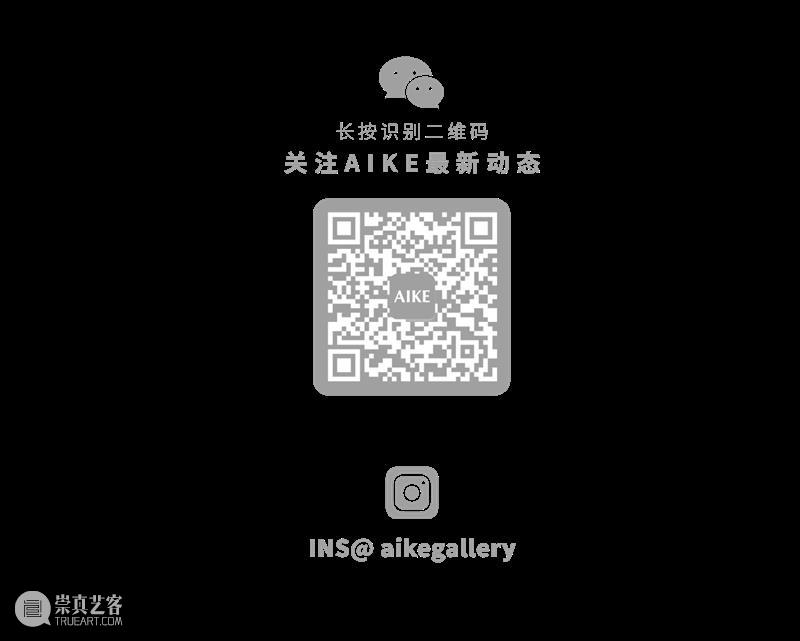



已展示全部
更多功能等你开启...





 分享
分享